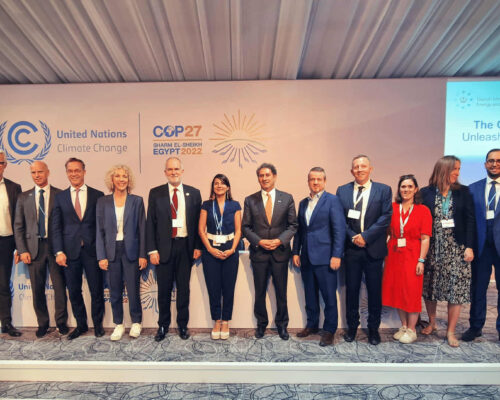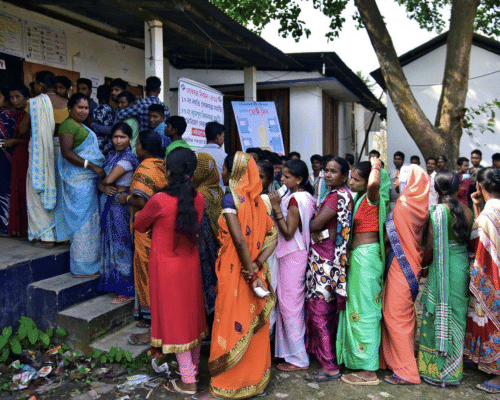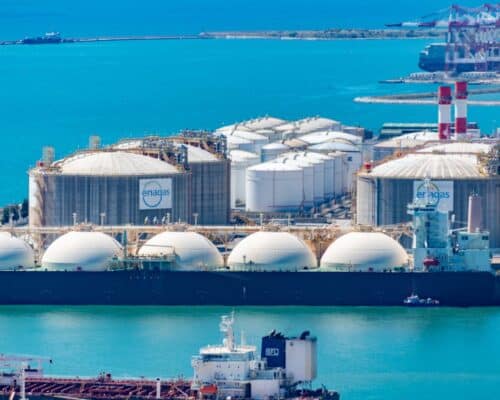Energy Poverty: Causes, Effects and Solutions
Damian Ryszawy / Shutterstock.com
10 April 2023 – by Evelyn Smail Comments (0)
Energy poverty is a term that refers to the lack of access to modern energy services. It affects millions worldwide, particularly in developing countries where access to electricity and clean cooking fuels is limited or non-existent.
The causes of energy poverty are multifaceted and vary from region to region. Some factors contributing to this issue include inadequate infrastructure, lack of investment in renewable energy sources, political instability, population growth, and climate change. In many cases, those most affected by energy poverty are also the most vulnerable members of society – women, children, elderly individuals and those living in rural areas.
Access to affordable and clean energy helps people meet their basic needs for a decent life. When people lack access to fundamentally important modern energy sources, they live in “energy poverty” and can suffer poor living conditions as a result.
Why Reducing Energy Poverty is Key for Sustainable Development
Ending energy poverty through access to “affordable, reliable, sustainable and modern energy for all” is a target within the UN’s 2030 Sustainable Development Goals (SDGs). Meeting this is crucial, as it underpins advancements towards many other SDGs, such as climate action, gender equality, poverty reduction, decent livelihoods and good health and education.
For example, at the household level, energy poverty can entail living without safe and affordable cooking, lighting, refrigeration or heating and cooling systems. The fumes from cooking with polluting solid fuels are the largest risk factor for early death in the world’s poorest households, with women and children most affected.
Energy serves vital services at the community level, such as schools, health clinics and local enterprises. More than 291 million children attend primary school without electricity, while health facilities that serve over 1 billion people lack electricity access.
Progress Is Stalling on Energy Access
While energy poverty has reduced over the past decade, a staggering number of people still lack access to modern energy worldwide. In 2020, 733 million people lived without electricity. Meanwhile, 2.4 billion people – more than half the population in Asia – still relied on inefficient and polluting cooking systems.
Moreover, the pace of progress towards energy access has stalled in recent years. Reasons include COVID-19 and the increasing difficulty of reaching hard-to-access communities, such as those in rural areas.
Added to this is the soaring cost of fossil fuels due to the war in Ukraine, which has sparked energy poverty crises in even previously energy-secure nations. “Governments need the fiscal space to support their most vulnerable populations to avoid worsening levels of energy poverty or losing energy access altogether,” said UN Secretary-General António Guterres in 2022.
Effects of Energy Poverty: Bangladesh’s Current Crisis
Bangladesh has been hit particularly hard by these compounding crises. While 96.2% of the population had access to electricity in 2020, the country relies on domestic and imported fossil fuels for more than 99% of primary energy generation. This has left it vulnerable to the recently skyrocketing global prices.
In July 2022, the government suspended operations of several diesel-run power plants to cut soaring energy import costs. The result was daily power cuts and load-shedding, affecting low-income households, schools, offices and factories. Then in October 2022, a grid failure sparked a 10-hour blackout, impacting up to 80% of its 168 million population and halting the operations of the country’s vital garment and telecommunications sectors.
Until recently, Bangladesh was the fastest-growing economy in the region, highlights Aditya Gowdara Shivamurthy from the think-tank Observer Research Foundation. One core factor was the country’s ready-made garments (RMG) industry, which accounts for 84% of its exports — making it crucial to its foreign reserves. However, many factories reported that production was slashed by up to 50% due to frequent power outages. This energy crisis severely affects people’s ability to earn a living and threatens Bangladesh’s overall economic growth and development potential.
Energy Poverty Solutions Are the Pathway to a Sustainable Future
Efforts to end energy poverty bring a myriad of benefits to people, society and the environment. While energy is becoming more sustainable and widely available, the progress is insufficient to ensure universal access to safe and affordable energy by 2030, according to the UN’s latest SDG report.
The crux of ending energy poverty is also the same as fighting the climate crisis. Reducing global greenhouse gas emissions and increasing energy efficiency is the key. Mobilising global financial flows to fund the massive deployment of clean, affordable and reliable renewables is a key way out of energy poverty for many communities. Supporting this transition is the rollout of electrification, efficiencies, storage and investments in grid infrastructure, and off-grid and mini-grid clean electricity generation. The latter can also bring immediate benefits to energy-poor areas, with solar representing “an enormous opportunity” to quickly address the scourge of energy poverty, highlights Damilola Ogunbiyi, CEO of the UN’s Sustainable Energy for All.





